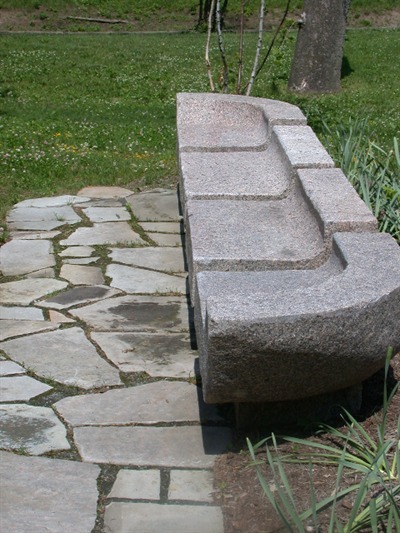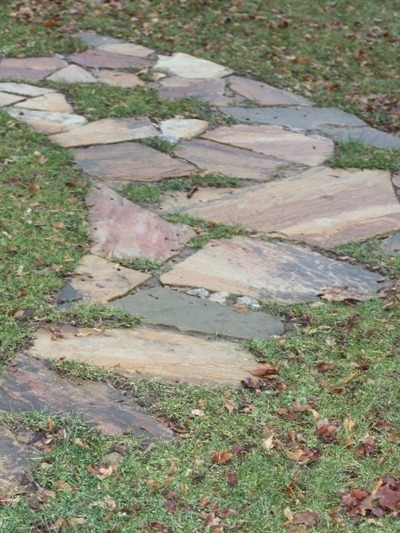Latvian Cultural Garden

The Latvian Cultural Garden was dedicated on October 8, 2006. The garden was designed by landscape architect Albert Park and assisted by local architect Kalvis Kampe. An unusually colored flagstone walk leads visitors past a number of sculpturs. The garden's focal point, however, is Maras Akmens. A granite sculpture designed by Latvian artists Girts and Gaits Burvis, the Maras Akmens is shaped as an open silhouette that depicts a symbol of Latvian folk art and represents the strength and spirit of the Latvian culture. The garden also has three other beautifully crafted sculptures by Girts and Gaits (father and son).
Pioneering Latvian families in the Cleveland area are considered to have been the Raufmanis (sometimes given as Kaulomonis) family who arrived in 1887 and the Krastins (sometimes Krostius) family who arrived in 1902. Because they were often counted by country rather than by ethnic origin in the U.S. Census, it is difficult to determine exactly how many Latvians lived in the area at different points in time. What is certain is that Cleveland's Latvian population remained fairly small, numbering only about 1,000 in 1930. The group did not occupy any distinct neighborhoods except for an area near W. 25th St. and Memphis in the Buckeye Rd. area. An estimated 2,500 Latvians had settled on the west side and in the suburbs by the end of the 1960s. Reflecting the difficulties faced in determining the Latvian presence in Cleveland, estimates of the Latvian population in the 1970s for Cuyahoga County range from 1,500 to 3,000.
In 1963, 1968 and 1973 the community hosted the Latvian Song Festival. The first such Latvian song festival was held in the city of Riga in 1873 while the city and country were still part of the Russian empire. It is considered to have been "the first organized countrywide manifestation of nationalism." This gave later festivals strong overtones of patriotism and nationalism. Cleveland's festival of 1963 reportedly brought 10,000 Latvians to the city. The centennial (1973) song festival attracted an estimated 15,000. With Latvia gaining its independence in August of 1991, many Cleveland Latvians began revisiting their homeland. Visitors arrived from Latvia as well. Among these was the President of Latvia, who visited Cleveland in November of 1994 for the re-opening of the Honorary Latvian Consulate.
Audio
Images



